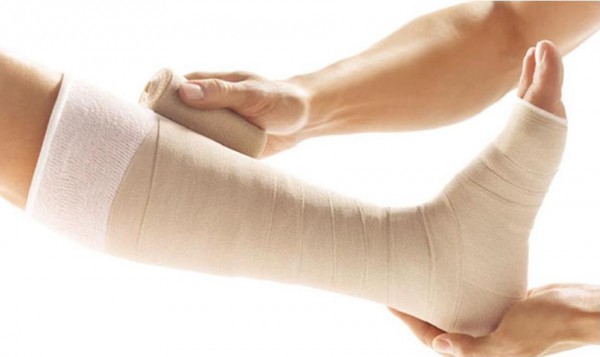How Compression Bandage Helps In Injury And Wound Management?
As the name suggests, a compression bandage uses the technique of compression to reduce the flow of blood within the affected area of injury and wound. Commonly known as elastic bandage, it is very effective in reducing swelling, controlling edema, treating varicose veins and healing sports injuries. It is stretchable in nature and available in different sizes. It is considered very helpful for wound management.

More importantly, these bandages form one of the cores of the injury treatment acronym, RICE – rest, ice, compression & elevation. They limit blood flow to a wounded area, or also used to hold a splint on the body by wrapping it around the area for compression. They are held in place by metal clips and that’s why they don’t slip off the injury area.
Further, elastic bandages are mostly made of materials as varied as elastic yarn, cotton and polyester. In fact, their compression and stretchable ability or limits are decided by the proportion of the materials used in them. On the whole, you need to wrap them as tight as it could to get the desired pressure, but never to disturb or cut off the circulation.
Things to know with compression bandage
Elastic bandages are deemed very effective when it comes to compressing a new injury or inflammation. In such cases, it does a good job of keeping the swelling down. However, an injury can’t be compressed beyond a point and this should be known to you. After all, healing is encouraged when the blood flow to the injured area goes up.
Here are some of the things to know about these bandages –
- These bandages are commonly found in most first-aid kits and they are very helpful in compressing are affected area
- They are available in many grades – from simple, daily use to the levels of compression required
- They can adjust accordingly to ensure consistent pressure over body and help control swelling
- They are fit for compression on strains, sprains, and contusions as doing this reduces swelling as well as internal bleeding
- These bandages also help in securely placing ice packs or heat packs on the injured area or part
- They come with adhesive tendency which is why can remain firmly in place without getting loose or shifting here and there
- They are painless to remove as they don’t stick to either hair or skin, rather stick to themselves
- Apart from the basic materials, some will also ensure added comfort by having a cotton backing
- Latex is also used to them for making them elastic but you can also have latex-free versions
- They are washable, reusable, and come in different widths and size to be fit on different parts or areas of the body
- They should not be applied so tightly to hinder the flow of blood else the healing might be impacted and other complications can come
- If you ever tied them tight, it might lead to loss of feeling in the area and tingling as well, and you will have to adjust it again














